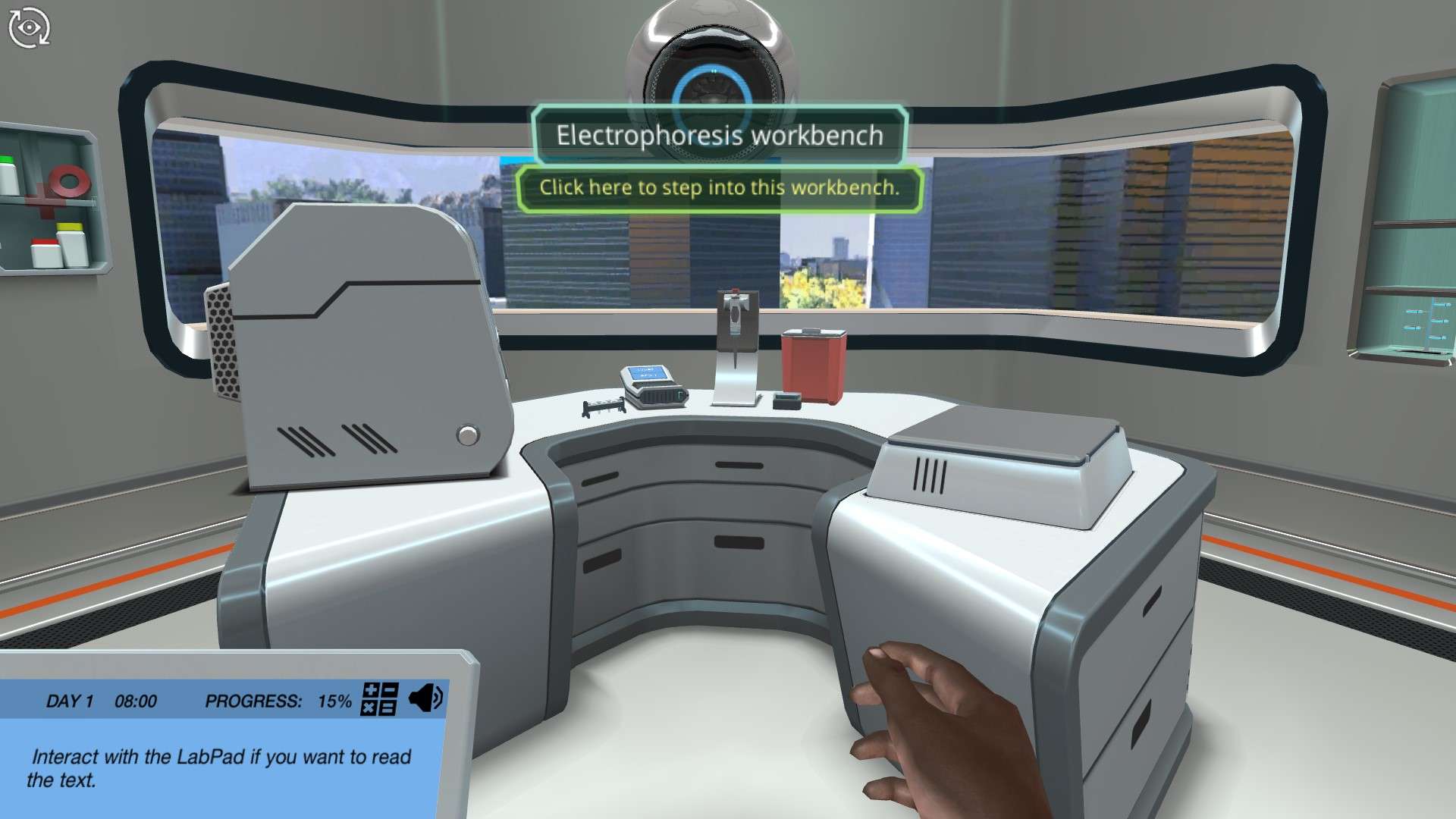Heading 1
Heading 2
Heading 3
Heading 4
Heading 5
Heading 6
Lorem ipsum dolor sit amet, consectetur adipiscing elit, sed do eiusmod tempor incididunt ut labore et dolore magna aliqua. Ut enim ad minim veniam, quis nostrud exercitation ullamco laboris nisi ut aliquip ex ea commodo consequat. Duis aute irure dolor in reprehenderit in voluptate velit esse cillum dolore eu fugiat nulla pariatur.
Block quote
Ordered list
- Item 1
- Item 2
- Item 3
Unordered list
- Item A
- Item B
- Item C
Bold text
Emphasis
Superscript
Subscript
About This Simulation
Solve a crime by using DNA fingerprinting to identify a thief. Use nucleic acid gel electrophoresis to separate and visualize DNA molecules and watch an animation to understand what happens inside the gel tank.
Learning Objectives
- Explain the visualization and separation of nucleic acid molecules through gel electrophoresis
- Summarize how nucleic acid molecules migrate through an agarose gel
- Explain the principles behind size separation and direction of migration
- Analyze and interpret a nucleic acid gel by using a DNA ladder and controls
About This Simulation
Lab Techniques
- Agarose gel electrophoresis
Related Standards
Learn More About This Simulation
Your peanut butter keeps getting stolen and it is time to catch the thief. In this simulation, you will learn how you can use DNA fingerprinting to identify individuals. You will use gel electrophoresis to separate and visualize DNA fragments.
Loading the gel
Join Dr. One in the molecular biology lab. The DNA samples from the crime scene and two suspects have already been collected, extracted, and amplified for you. You will start by learning about sample preparation and loading the samples into an agarose gel with a pipette.
Look inside the gel
Once you have loaded all the samples into the gel, you can start the gel electrophoresis process. While this runs, you will dive into the gel tank and discover how DNA fragments are separated by size with this technique through an immersive animation.
Analyzing the gel
Now that you understand how gel electrophoresis works, you will return to the molecular biology lab. The DNA fragments have now been separated and visualized so you can compare the band patterns of the two suspect samples with that of the crime scene sample. Will you be able to catch the thief?
For Science Programs Providing a Learning Advantage
Boost STEM Pass Rates
Boost Learning with Fun
75% of students show high engagement and improved grades with Labster
Discover Simulations That Match Your Syllabus
Easily bolster your learning objectives with relevant, interactive content
Place Students in the Shoes of Real Scientists
Practice a lab procedure or visualize theory through narrative-driven scenarios


FAQs
Find answers to frequently asked questions.
Heading 1
Heading 2
Heading 3
Heading 4
Heading 5
Heading 6
Lorem ipsum dolor sit amet, consectetur adipiscing elit, sed do eiusmod tempor incididunt ut labore et dolore magna aliqua. Ut enim ad minim veniam, quis nostrud exercitation ullamco laboris nisi ut aliquip ex ea commodo consequat. Duis aute irure dolor in reprehenderit in voluptate velit esse cillum dolore eu fugiat nulla pariatur.
Block quote
Ordered list
- Item 1
- Item 2
- Item 3
Unordered list
- Item A
- Item B
- Item C
Bold text
Emphasis
Superscript
Subscript
A Labster virtual lab is an interactive, multimedia assignment that students access right from their computers. Many Labster virtual labs prepare students for success in college by introducing foundational knowledge using multimedia visualizations that make it easier to understand complex concepts. Other Labster virtual labs prepare learners for careers in STEM labs by giving them realistic practice on lab techniques and procedures.
Labster’s virtual lab simulations are created by scientists and designed to maximize engagement and interactivity. Unlike watching a video or reading a textbook, Labster virtual labs are interactive. To make progress, students must think critically and solve a real-world problem. We believe that learning by doing makes STEM stick.
Yes, Labster is compatible with all major LMS (Learning Management Systems) including Blackboard, Canvas, D2L, Moodle, and many others. Students can access Labster like any other assignment. If your institution does not choose an LMS integration, students will log into Labster’s Course Manager once they have an account created. Your institution will decide which is the best access method.
Labster is available for purchase by instructors, faculty, and administrators at education institutions. Purchasing our starter package, Labster Explorer, can be done using a credit card if you are located in the USA, Canada, or Mexico. If you are outside of North America or are choosing a higher plan, please speak with a Labster sales representative. Compare plans.
Labster supports a wide range of STEM courses at the high school, college, and university level across fields in biology, chemistry, physics, and health sciences. You can identify topics for your courses by searching our Content Catalog.















